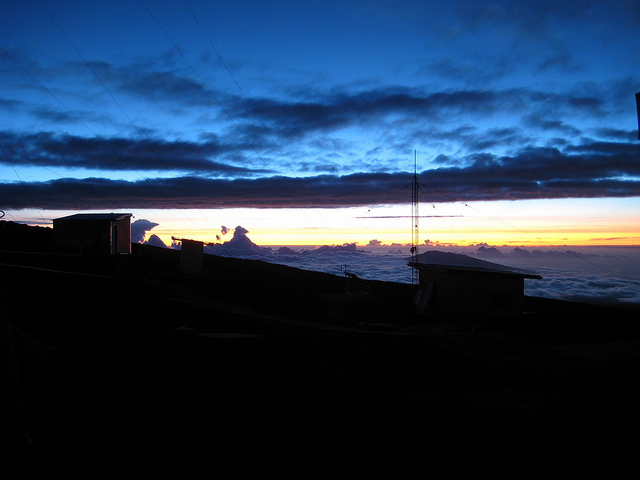Search Results for Tag: climate change
The tricky job of hammering out a climate wishlist
 The first World Youth Sustainability concluded in Berlin recently. It brought together over 150 young people from 31 countries who met policymakers and experts to talk about how their dream of a more sustainable, equitable world could be realized. Two young participants, Anne-Sophie Risse and Teresa Thalmaier, describe their experiences at the tightly-packed summit.
The first World Youth Sustainability concluded in Berlin recently. It brought together over 150 young people from 31 countries who met policymakers and experts to talk about how their dream of a more sustainable, equitable world could be realized. Two young participants, Anne-Sophie Risse and Teresa Thalmaier, describe their experiences at the tightly-packed summit.
Anne-Sophie Risse, youthinkgreen-Team Osnabrück:
Friday, May 17 – Day seven of our first World Youth Sustainability Summit. Off to an early start – my alarm rings at 6 a.m. It’s not so unusual really since I get up at that hour anyway during a normal school week. But yesterday was a long day. We spent the whole day at the Pariser Platz in central Berlin for our Tree of Hope project. It’s made of trash and has pages bearing the wishes, demands, hopes and requests from us and from other people addressed to lawmakers, governments and people around the world.
Now, early Friday morning, it’s our job to hand over the Tree of Hope to German Environment Minister Peter Altmaier. We – that is 160 young people from 31 countries – arrive at the ministry at 8 a.m. We’d come together in Berlin to draft a document expressing what we want to policymakers, business and society. Our meeting with Altmaier lasts just 15 minutes.
 In order to get a solid understanding of some of the issues that made it into the document, we’ve been listening to daily talks by various experts on climate change and other topics. Today, it’s the turn of renowned climate researcher Hans Joachim Schellnhuber. We head to the Potsdam Institute for Climate Impact Research to hear him speak. He’s very competent and understanding and begins his talk by saying “I’ll wake you up when something important comes up!” In addition to several interesting facts on climate change, I take away this impression from the talk – if there’s an acute, common problem then even nations that are sworn enemies can manage to work together.
In order to get a solid understanding of some of the issues that made it into the document, we’ve been listening to daily talks by various experts on climate change and other topics. Today, it’s the turn of renowned climate researcher Hans Joachim Schellnhuber. We head to the Potsdam Institute for Climate Impact Research to hear him speak. He’s very competent and understanding and begins his talk by saying “I’ll wake you up when something important comes up!” In addition to several interesting facts on climate change, I take away this impression from the talk – if there’s an acute, common problem then even nations that are sworn enemies can manage to work together.
I wonder if things have to go that far. With that thought, we head to the next workshop “Climate change – an intergenerational problem.” Carl-Friedrich Schleußner is the expert in this case and says that people need to live in such a way so that life for successive generations is at least just as good. It’s a topic you can discuss forever. So that the day doesn’t end on too theoretical a note, we’re shown videos by the “ClimateMediaFactory.org” – the world as a user of a network dubbed “Earthbook.” The videos were really well done.
Teresa Thalmaier, youthinkgreen-Team Windhoek:
After absorbing so many new impressions, faces, fascinating lectures and different cultures, we headed to the Konrad Adenauer Foundation.
“If you thought the last few days were grueling, then you’d better get prepared for something really tough today. But that’s what you’ll take home with you, something you can be proud of.” That’s how Helmut Spiering, the project founder of youthinkgreen, welcomed us.
Another two long hours to go before lunch. Initially, we sat in groups of maximum ten young people and racked our brains – what do we actually want? What needs to change? How can we shape our world in a more sustainable manner? How can you achieve that aim?
It sounds easier than it is. How do you formulate things that are politically correct and still compelling? But we weren’t the only ones struggling with the problem. After another discussion in a smaller circle, further groups were created. Now four larger with 40 members each worked on their wish lists. Exhausted, we dragged ourselves off to lunch to recharge our batteries. We all really needed it!
But the tough part was still to come. We were asked to discuss the four wish lists from all the groups and to combine then. We – 160 young people from 31 countries – sat excitedly in a large conference room. There were so many different cultures and languages represented. But all that wasn’t meant to hinder us.
The most difficult part often was formulating the document. Often, our statements weren’t concrete enough, at times superfluous – though there were really good ideas behind them. We gained a deep insight into how a parliament works, how politics is done on an international stage. At the end, we had our final document. It’s unbelievable what we achieved in the last weeks and I’m happy to be a part of the youthinkgreen family!
North pole changes places

Visualization of the earth’s magnetic field, connecting the North pole (orange lines) with South pole (blue lines) (Photo credit: NASA)
Climate change has many impacts on the planet, and researchers recently discovered another striking one: North Pole is moving. It’s not the ice masses in the Arctic, but acually the Northern pole of the earth’s magnetic field.
With help of satellite measurements, scientists figured out that the pole is shifting about 20 centimeters per year towards Greenland. Position of the magnetic field’s poles is determined by mass distribution around the planet. This mass distribution changes due to climate change: Accelerated melting of the poles account for 90 per cent of the movement, the study concludes.

The magnetic field protects the planet from solar winds – resulting in such nice polar lights. (Photo credit: CC BY 2.0: Nasa)
You wonder about the remaining 10 per cent? Well, you might not have known yet (so did we) that the pole is constantly moving as earth’s mass distribution changes anyway seasonally/continuously by snow- or rainfall or continental drift. The movement due to melting ice sheets adds up on this trend. For scientists, this is more than just a “nice-to-know”-fact: the satellite measurements can help climate researchers to tell, where ice is lost and in consequence provide more detail to predict climate change impacts.
Coral collapse considered evitable
Normally, we mostly present you animals threatened by climate change – but this time, we have some good news for you: Researchers recently found out that there is a way corals might actually survive the multiple threats of humanity. We actually give these small creatures a very hard live: pollution, overfishing and last but not least climate change. The latter influences the reefs by ocean acidification and rising sea temperatures.
For a long time it was thought that those cnidaria folks won’t cope with those impact. But the new study gives a glimpse of hope: If we manage to lower CO2 emission under the current level and stop overfishing, then all reefs with more than 20 per cent coral cover will survive. That’s the only chance, the researchers figured out.
For their work they took into account models for climate change, ecosystem dynamics, and carbonate processes. That way they could show that fish colonies are crucial for corals to survive, as they eat away straggling algae on the reefs resulting in more space for corals to grow.
Eat (more) insects!
Ever wondered what you could do to fight climate change, but never came up with a proper solution? A quiet common way is to switch to a vegetarian diet, as meat production accounts for about 30 per cent of greenhouse gas emissions. If you can’t do without your daily portion of proteins (aka meat) – here might be a convenient idea: Eat more insects! This is not a suggestion of some weird person being anxious about animals with too many legs and wants them to go extinct. It’s a seriously meant proposal from the UN to feed the booming population all over the world.
If a simple recommendation is not good enough for you, but you need some convincing numbers- the New Scientist has put them down:
To produce 1 kilogram of beef, for example, you need 10 kg of feed, whereas 1 kg of crickets requires just 1.7 kg. What’s more, 80 per cent of a cricket is edible compared with just 40 per cent of a cow.
In consequence, much less land would be needed to grow food for our food (as insects could even grow on kinds of waste) – we would get more food from the same amount of grain and would thereby cut pollution.
This kind of diet is already familiar in some parts of the world, yet the most consumed are beetles, ants and bees. In total 1,900 insects have been identified to be suitable for human diet.
But for lots of people it is quite unthinkable to take a bite. What’s your opinion: Is the argument of sustainability strong enough to change people’s minds?
Live like millions of years ago?

CO2 levels are measured on Mauna Loa volcano as the air is of very good (clear) quality up here (Photo: LCDR Eric Johnson, NOAA Corps)
You might not have realized it, but last Friday something quite historical happened: For the first time since the Pliocene (about five to three million years ago) CO2 concentration in the atmosphere crossed the 400 parts-per-million limit. The last time that much carbon dioxide was in the atmosphere, the Arctic was ice-free, the Sahara desert was a savanna and the sea level was 40 meters above today’s level.

NOAA’s observatories on dead Mauna Loa volcano, Hawaii, where atmospheric CO2 levels are monitored (CC BY SA 2.0: sharloch)
Measuring this carbon level is kind of a family business: More than 50 years ago, Charles Keeling started measurements on the dead Mauna Loa volcano, where air quality is very good. Back then, in 1958, CO2 concentration was around 315 ppm – compared to 280 ppm on preindustrial level. Today, his son Ralph Keeling continues the measurements.
The overall trend is increasing, though CO2 levels fluctuate periodically from winter to summer season, when plants naturally fix more carbon dioxide due to leaf growth. Scientists attribute this overall increase to anthropogenic CO2 emissions – mainly from burning fossil fuels.
Within the last ten years, CO2 concentration has risen by two ppm per year. If the world continues emitting carbon at this pace, the next important threshold is not far away (german link). CO2 concentration may not rise upon 445 ppm CO2 (445 molecules of carbon dioxide in one million molecules) if the two degree target is to be met, scientists of the Intergovernmental Panel on Climate Change (IPCC) say.












Feedback